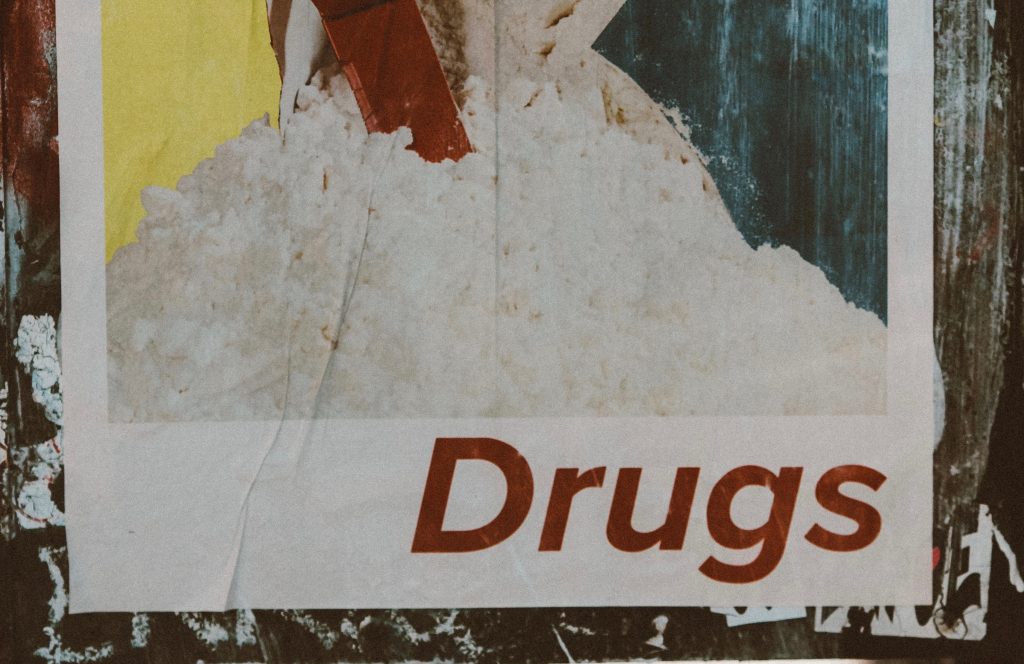By Ana B. Ibarra, Erica Yee and Nigel Duara for CalMatters
It is nearly impossible to escape reminders of today’s boiling opioid epidemic — the billboard advertising Narcan on your commute, a local news story of a teen’s accidental overdose, or the ever-growing public debate over how to best address it.
In just three years, between 2019 and 2021, California’s opioid-related deaths spiked 121%, according to the state’s health department. The vast majority of these deaths were linked to fentanyl, an extremely potent synthetic opioid.
While pharmaceutical fentanyl has long been used to treat severe pain, say, after surgery, cheaply manufactured illicit fentanyl has become a growing threat in large cities, rural communities and suburban neighborhoods. Oftentimes the harm lies in counterfeit prescription pills and party drugs that, unbeknownst to the user, are laced with fentanyl. And drug trends are ever-changing. What in the 1990s was an epidemic driven largely by people abusing prescription opioids, today is one where fentanyl can be mixed with other substances like xylazine, commonly known as “tranq,” a powerful sedative approved for veterinary use.
Citing the rise in overdose deaths and feeling the pressure to act, lawmakers introduced about three dozen proposals this legislative session and held special hearings. They want to answer the question: How can California prevent more overdose deaths?
Why is fentanyl so dangerous?
Dubbed the “killer opioid,” fentanyl can come in liquid or powder form, or made to look like a prescription pill. It is known to be extremely potent: 50 times stronger than heroin and 100 times stronger than morphine. That means even a very small amount can be lethal. During an overdose, people’s breathing may slow or stop altogether.
It is impossible to know just by looking at a drug if it has been tainted with fentanyl. That is why health experts and harm reduction advocates have been pushing for the wider distribution of fentanyl test strips, which can help users detect whether fentanyl is present in their supply. And while some states ban these test strips — based on the argument that this instigates drug use — California promotes and distributes them for free.
Tallying deaths and hospitalizations
Deaths related to fentanyl began to rise exponentially around 2019. Between September 2021 and September 2022, the timeframe for the most recent state data, 5,942 people died after ingesting the synthetic opioid. That accounts for about 86% of all opioid-related deaths. And of the 21,000 emergency room visits related to opioids in this same time period, about a third were linked to fentanyl.
For some context: In 2021, more Californians died from fentanyl overdoses than from car accidents. Males, Black and Native American Californians, and those 30 to 34 years old are disproportionately dying from fentanyl overdoses.
$1 billion against the opioid crisis
Since taking office, Gov. Gavin Newsom and his administration have spent more than $1 billion in an attempt to reign in the opioid and fentanyl epidemic. About half of that money has come from the federal government, which provides money for prevention, treatment and recovery services. The state has allocated $416 million from its own general fund, which has been primarily used for medication-assisted treatments for people with opioid use disorders and to purchase naloxone, according to the Department of Finance.
The remaining money — $133 million — comes from opioid manufacturers, distributors and their partnering consulting firms as part of settlements for their participation in fueling the prescription opioid crisis. Perhaps most notably, Janssen Pharmaceuticals, owned by Johnson & Johnson, and three wholesale distributors agreed to pay $26 billion to settle thousands of lawsuits brought by cities and counties nationwide. California will receive just over $2 billion of that through 2028, with the majority of the money going directly to cities and counties.
California has also received millions from the consulting firm McKinsey & Company for its role in advising opioid companies, and from generic opioid maker Mallinckrodt Pharmaceuticals. The state is awaiting settlement payouts from multiple other drug manufacturers and big box pharmacies.
Funds from opioid settlements are allocated to departments through the budget process and are meant to be used for specific purposes, including: fentanyl education programs for youth, substance use disorder training for clinicians, naloxone purchase and distribution, and overdose data collection.
Overdose rates by county

Opioid overdoses and deaths have reached almost every corner of California. Disproportionately affected are the rural north coast counties of Del Norte, Lake, Humboldt and Mendocino, which are seeing the highest rates of opioid-related mortality, according to preliminary state data.
But by and large, the most populous counties are burdened with the largest overall number of deaths from fentanyl and other opioids. These counties are also receiving the largest share of the more than $200 million in opioid settlement funds distributed directly to local governments. (That money is separate from the millions received and spent by the state.) Los Angeles, San Diego, Orange County and Riverside have recorded half of the state’s opioid deaths and have received 42% of the opioid settlement money that has been distributed so far among counties and cities.
Naloxone, the overdose reversal medication, is perhaps the most agreed-upon tool in aiding the opioid crisis. It is available most commonly in the form of a nasal spray, but also in injectable form. It’s largely effective and safe, and California is pushing for its broader availability in common public spaces. However, for it to be widely used, naloxone also has to be affordable and easily accessible.
In March the FDA approved Narcan, a brand name of naloxone, for sale over the counter — meaning it can be sold in other places, like gas stations and convenience stores, in addition to pharmacies. The date of availability is still pending.
Without insurance, the retail price for a brand name supply of two nasal sprays is currently about $150, even though it costs about $32 to make, according to Remedy Alliance, a Berkeley-based nonprofit that advocates for low-cost naloxone. GoodRx lists discounted prices for generic naloxone at big box pharmacies that range from $30 to $79.
Still, any cost can be a barrier for people seeking life-saving medication. In California, various public agencies and community-based groups distribute naloxone for free.
The state dedicates millions of dollars to secure and distribute naloxone. To sustain those efforts, Newsom has proposed that the state manufacture its own naloxone under its CalRx initiative. The cost and how soon it could be available is still unknown. In his most recently approved budget, Newsom allocated $30 million to this effort.
Enforcement
Nationally, U.S. Customs and Border Protection announced the seizure of more than 22,000 pounds of fentanyl between Oct. 1, 2022 and June 30. In the same period from October 2021 to June 2022, federal authorities seized 8,300 pounds.
Neither the California Department of Justice nor the U.S. Department of Justice publish data on their fentanyl seizures, though they occasionally publicize big busts. The federal government announced a stepped-up enforcement program for Southern California called Operation Blue Lotus that resulted in the seizure of more than 4,700 pounds of fentanyl and more than 200 arrests in September 2022.
In the Central Valley, a couple of California Highway Patrol traffic stops led the Department of Justice’s Merced Area Gang and Narcotic Enforcement Team to more than 40 pounds of fentanyl and seven arrests in May.
Homicide charges after overdoses
Two counties hard-hit by fentanyl deaths, especially among people younger than 25, have prosecuted harsher punishments of fentanyl dealers in an effort to combat overdose deaths.
The Placer County District Attorney’s Office has begun charging people associated with fentanyl overdoses with murder. In one case, the district attorney amended the complaint against a man accused of fentanyl dealing, adding a murder charge. In July, the man was convicted of second-degree murder, which the county says is the first conviction of its kind in the state.
It was no coincidence that Newsom chose San Diego as the site of his announcement of a “master plan” for addressing opiate addiction and dealing. The county and city of San Diego have made fentanyl a focus of their enforcement efforts.
People have died of overdoses in their fast food restaurants, in their juvenile detention halls, on their streets. City officials have variously referred to it as a “nightmare” an “epidemic” and a “tidal wave.”
The city’s mayor, Todd Gloria, issued an executive order in November that mandates that the San Diego Police Department prioritize both enforcement of fentanyl dealing and booking those accused of fentanyl dealing into jail. The county Board of Supervisors unanimously approved $5 million over three years to hire public health workers that will watch fentanyl use trends and offer outreach services to people suffering from addiction.
What lawmakers want to do
Republicans, some Democrats and law enforcement leaders have been pushing for harsher penalties for fentanyl possession and dealing, although those measures generally have not moved forward in the Legislature.
In the meantime, the state GOP is attempting to keep the issue front-and-center. The Assembly Republican Caucus maintains a running counter of the number of deaths in California attributed to fentanyl.
People lined up for more than an hour to get into an April special hearing on the issue, which ended with four bills passed. But two of the most sweeping bills – ones that would have increased penalties for possessing large amounts of fentanyl and longer sentences for people associated with a fentanyl overdose death – failed to advance. In a tweet, the state GOP called the bills’ failure “a victory for our state’s fentanyl dealers.”
The bills that are moving forward are one that would create a task force to address fentanyl overdoses and another that would increase fines for dealers by putting fentanyl in the same category as heroin and cocaine.
Opponents of harsher penalties pointed to the failed enforcement policies of the crack cocaine epidemic as a reason to reject harsher sentences. Locking up users, opponents said, was a policy choice that led to overcrowded prisons and overpoliced communities.


Be the first to comment on "California’s opioid deaths increased by 121% in 3 years. What’s driving the crisis?"